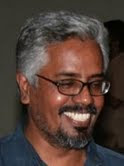homage to chidananda dasgupta

Upperstall profile by: Shoma A Chatterji
The film critic in India is marginalized within the world of journalists in general and critics in particular. The investigative journalist, the political commentator, the environmental reporter and the rural explorer lead the hierarchy of journalists with their 'hard-core' writing. Chidananda Dasgupta has changed the scenario forever. Film criticism is now as 'hard-core' as mainstream journalism, though it does not command the space and the platform in the print media the way it used to when Dasgupta was a practising critic. Rather, it is Film Studies that is now a much-in-demand discipline in several universities in India. In this sense, Dasgupta is a pioneer in the movement towards serious writing on cinema, stressing time and again, through his writings, that the distinction between art house cinema and mainstream cinema is a myth. He made history with the Lifetime Achievement Award bestowed on him for Best Writing at the Sixth Osian''s Cinefan Festival of Asian Cinema in July 2004. This is the first ever Lifetime Achievement Award to have been conferred on a film critic and scholar. "I am getting this award at a time when film criticism is almost dying out in India. We spent our lives teaching people the value and worth of cinema. When we first asked for government help to form the first film society, the official at the ministry said, "Film society, what's that?" Thankfully, lots of things have changed since then," he said in his response to the award.
To label Dasgupta only as 'film critic' however, is unfair because he pioneered the film society movement along with like-minded friends Satyajit Ray and Harisadhan Dasgupta in 1947. "A comment from Cyril Connelly, editor of Horizon, who said, "Calcutta is a city which has no film society" set off the trigger, more because Bombay had already laid the foundation for two film societies, one in 1937 and another in 1942. Neither of these evolved into a movement. Nor did they bring about changes in Indian cinema. We decided to change all this. With 50 members at a membership fee of Rs 5.00 per month and Prasanta Mahalanobis as our first President, the membership looked like a veritable Who's Who ofhttp://www.blogger.com/img/blank.gif the Calcutta intelligentsia." Dasgupta suggested the forming of a Film Federation and along-with six others. "We met Krishna Kripalani in 1959 and in 1960, the Federation began to function," reminisces Dasgupta.
read more at http://www.upperstall.com/people/chidananda-dasgupta


0 Comments:
Post a Comment
Subscribe to Post Comments [Atom]
<< Home